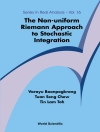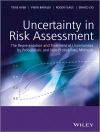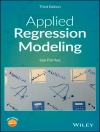A one-of-a-kind resource on identifying and dealing with bias in
statistical research on causal effects
Do cell phones cause cancer? Can a new curriculum increase
student achievement? Determining what the real causes of such
problems are, and how powerful their effects may be, are central
issues in research across various fields of study. Some researchers
are highly skeptical of drawing causal conclusions except in
tightly controlled randomized experiments, while others discount
the threats posed by different sources of bias, even in less
rigorous observational studies. Bias and Causation presents a
complete treatment of the subject, organizing and clarifying the
diverse types of biases into a conceptual framework. The book
treats various sources of bias in comparative studies–both
randomized and observational–and offers guidance on how they
should be addressed by researchers.
Utilizing a relatively simple mathematical approach, the author
develops a theory of bias that outlines the essential nature of the
problem and identifies the various sources of bias that are
encountered in modern research. The book begins with an
introduction to the study of causal inference and the related
concepts and terminology. Next, an overview is provided of the
methodological issues at the core of the difficulties posed by
bias. Subsequent chapters explain the concepts of selection bias,
confounding, intermediate causal factors, and information bias
along with the distortion of a causal effect that can result when
the exposure and/or the outcome is measured with error. The book
concludes with a new classification of twenty general sources of
bias and practical advice on how mathematical modeling and expert
judgment can be combined to achieve the most credible causal
conclusions.
Throughout the book, examples from the fields of medicine,
public policy, and education are incorporated into the presentation
of various topics. In addition, six detailed case studies
illustrate concrete examples of the significance of biases in
everyday research.
Requiring only a basic understanding of statistics and
probability theory, Bias and Causation is an excellent supplement
for courses on research methods and applied statistics at the
upper-undergraduate and graduate level. It is also a valuable
reference for practicing researchers and methodologists in various
fields of study who work with statistical data.
This book was selected as the 2011 Ziegel Prize
Winner in Technometrics for the best book reviewed by the
journal.
It is also the winner of the 2010 PROSE Award for
Mathematics from The American Publishers Awards for
Professional and Scholarly Excellence
สารบัญ
Preface xi
1. What Is Bias? 1
1.1 Apples and Oranges, 2
1.2 Statistics vs. Causation, 3
1.3 Bias in the Real World, 6
Guidepost 1, 23
2. Causality and Comparative Studies 24
2.1 Bias and Causation, 24
2.2 Causality and Counterfactuals, 26
2.3 Why Counterfactuals? 32
2.4 Causal Effects, 33
2.5 Empirical Effects, 38
Guidepost 2, 46
3. Estimating Causal Effects 47
3.1 External Validity, 48
3.2 Measures of Empirical Effects, 50
3.3 Difference of Means, 52
3.4 Risk Difference and Risk Ratio, 55
3.5 Potential Outcomes, 57
3.6 Time-Dependent Outcomes, 60
3.7 Intermediate Variables, 63
3.8 Measurement of Exposure, 64
3.9 Measurement of the Outcome Value, 68
3.10 Confounding Bias, 70
Guidepost 3, 71
4. Varieties of Bias 72
4.1 Research Designs and Bias, 73
4.2 Bias in Biomedical Research, 81
4.3 Bias in Social Science Research, 85
4.4 Sources of Bias: A Proposed Taxonomy, 90
Guidepost 4, 92
5. Selection Bias 93
5.1 Selection Processes and Bias, 93
5.2 Traditional Selection Model: Dichotomous Outcome, 100
5.3 Causal Selection Model: Dichotomous Outcome, 102
5.4 Randomized Experiments, 104
5.5 Observational Cohort Studies, 108
5.6 Traditional Selection Model: Numerical Outcome, 111
5.7 Causal Selection Model: Numerical Outcome, 114
Guidepost 5, 121
Appendix, 122
6. Confounding: An Enigma? 126
6.1 What is the Real Problem? 127
6.2 Confounding and Extraneous Causes, 127
6.3 Confounding and Statistical Control, 131
6.4 Confounding and Comparability, 137
6.5 Confounding and the Assignment Mechanism, 139
6.6 Confounding and Model Specifi cation, 141
Guidepost 6, 144
7. Confounding: Essence, Correction, and Detection 145
7.1 Essence: The Nature of Confounding, 146
7.2 Correction: Statistical Control for Confounding, 172
7.3 Detection: Adequacy of Statistical Adjustment, 180
Guidepost 7, 191
Appendix, 192
8. Intermediate Causal Factors 195
8.1 Direct and Indirect Effects, 195
8.2 Principal Stratifi cation, 200
8.3 Noncompliance, 209
8.4 Attrition, 214
Guidepost 8, 215
9. Information Bias 217
9.1 Basic Concepts, 218
9.2 Classical Measurement Model: Dichotomous Outcome, 223
9.3 Causal Measurement Model: Dichotomous Outcome, 230
9.4 Classical Measurement Model: Numerical Outcome, 239
9.5 Causal Measurement Model: Numerical Outcome, 242
9.6 Covariates Measured with Error, 246
Guidepost 9, 250
10. Sources of Bias 252
10.1 Sampling, 254
10.2 Assignment, 260
10.3 Adherence, 266
10.4 Exposure Ascertainment, 269
10.5 Outcome Measurement, 273
Guidepost 10, 277
11. Contending with Bias 279
11.1 Conventional Solutions, 280
11.2 Standard Statistical Paradigm, 286
11.3 Toward a Broader Perspective, 288
11.4 Real-World Bias Revisited, 293
11.5 Statistics and Causation, 303
Glossary 309
Bibliography 321
Index 340
เกี่ยวกับผู้แต่ง
HERBERT I. WEISBERG, Ph D, is founder and President of Correlation Research Inc., a consulting firm that specializes in the application of statistics to various business and legal issues. Dr. Weisberg has over forty years of statistical consulting experience and has published numerous articles related to bias assessment and reduction.












